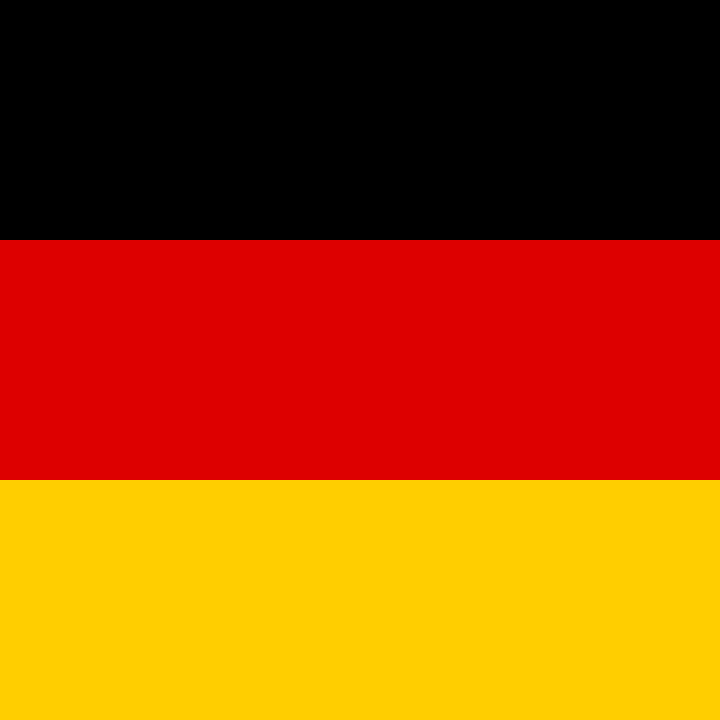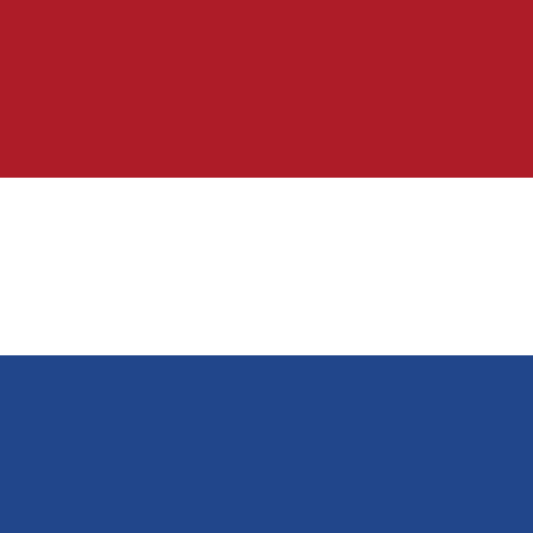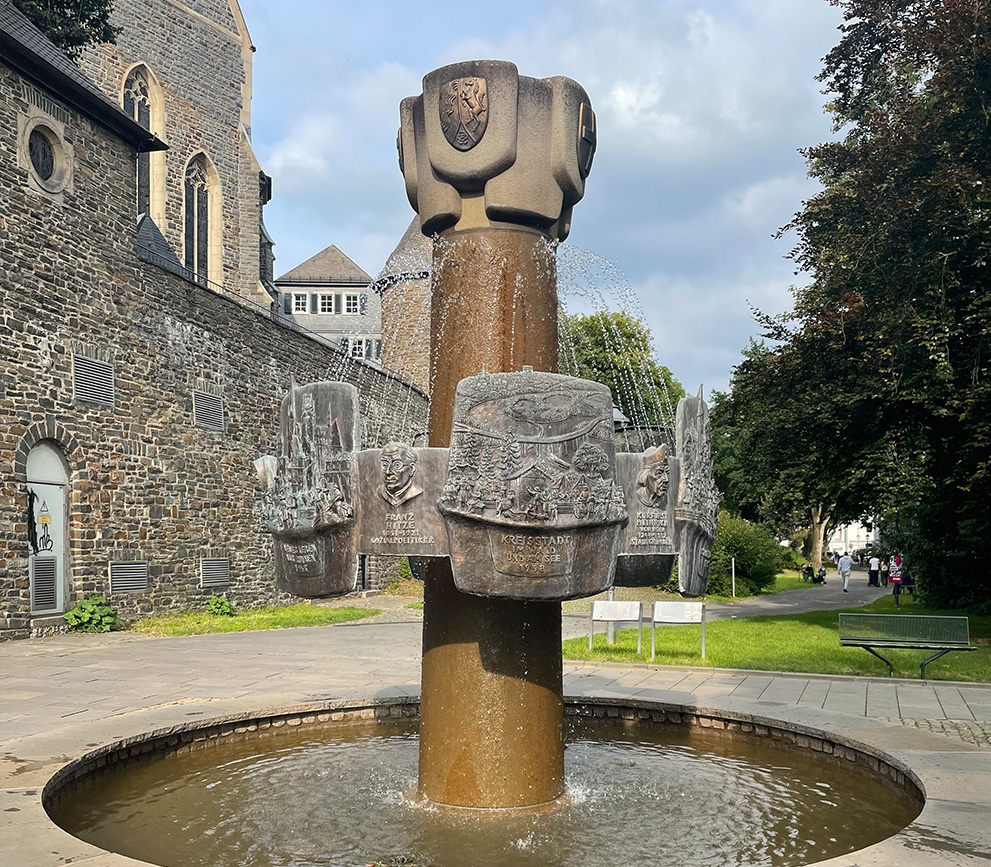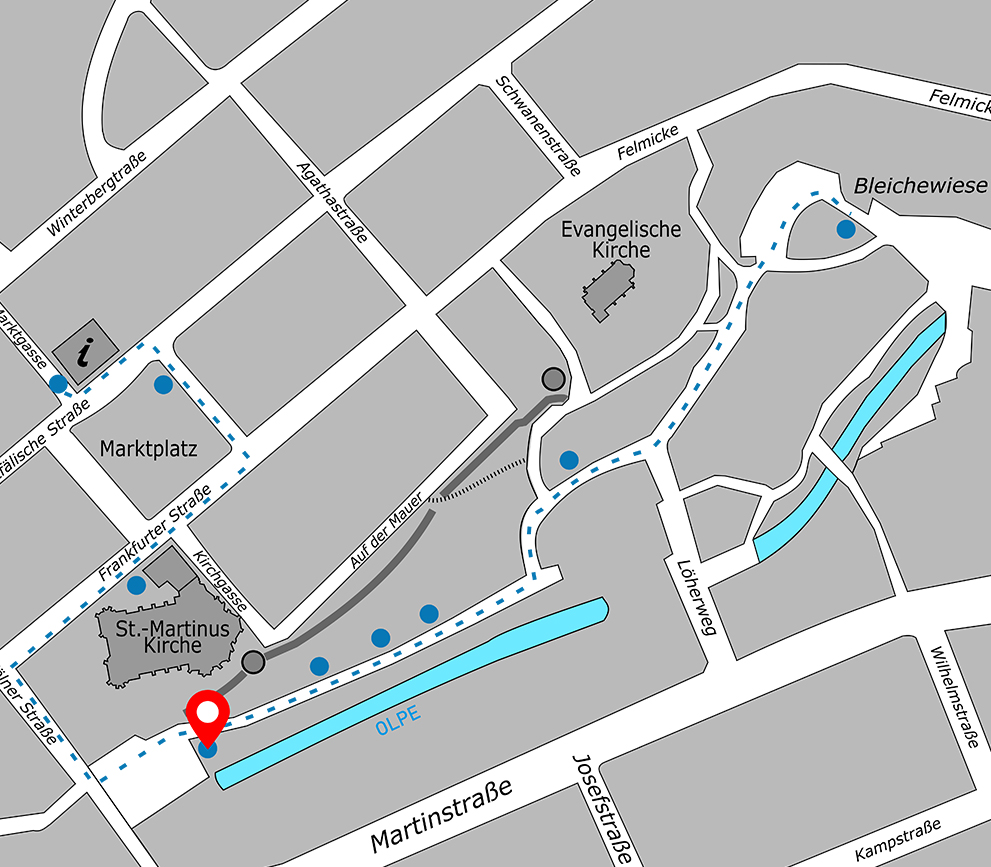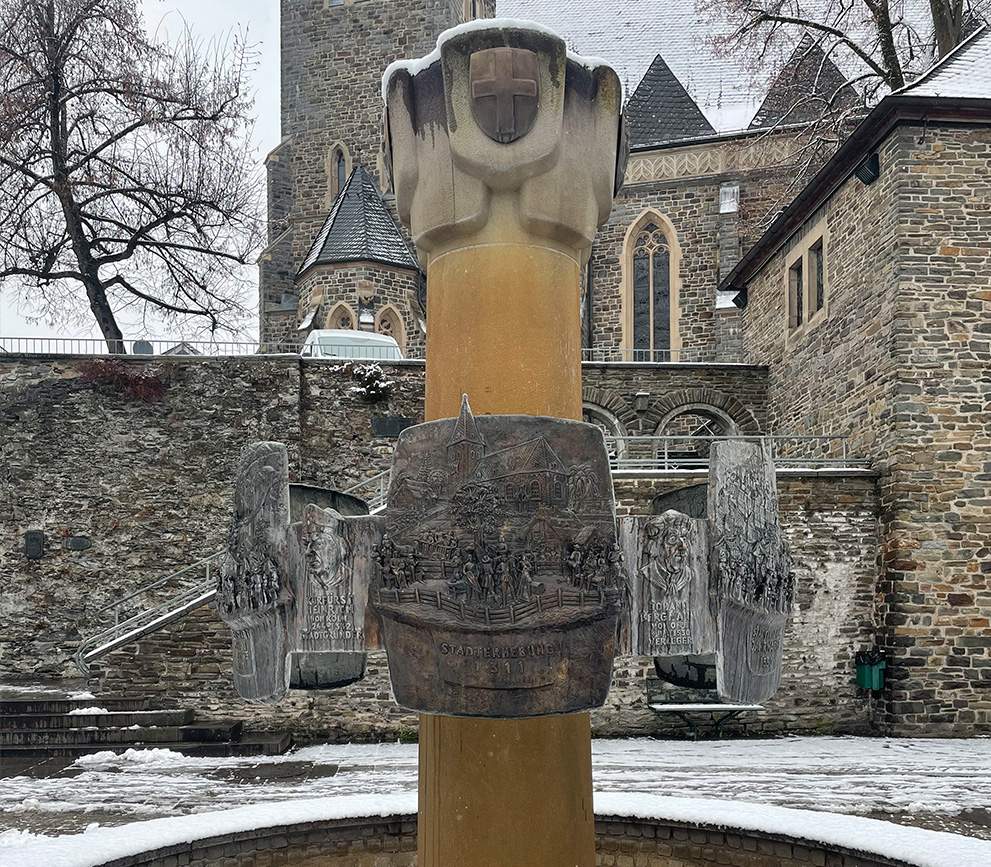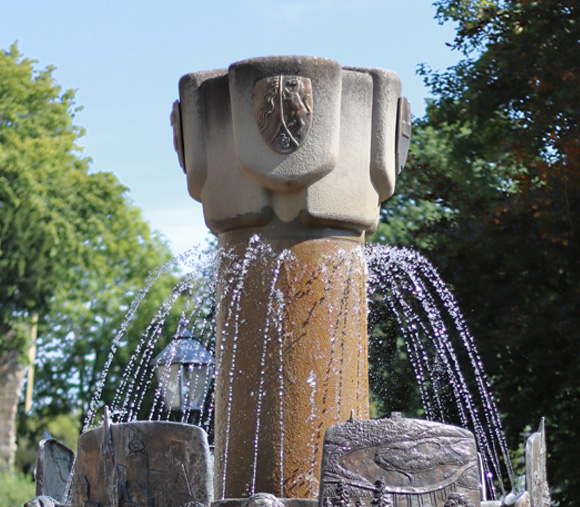
- Audio-Führung
starten - Hörspiel
für Kinder - Audio-
Führung für
Sehgeschädigte
5History fountain
Designed by Düsseldorf-based sculptor Karl-Heinz Klein, the Olper Geschichtsbrunnen (Olpe history fountain) was erected on Kurkölner Platz in 1998 and depicts the town’s history.
Take a look at the fountain from all sides, walk around it and discover its individual components: four coats of arms can be seen on the wreath that tops the stone column. One with a cross displays the coat of arms of the Electorate of Cologne. Olpe was part of the Electorate of Cologne until 1802/03, which is why the square is named “Kurkölner Platz”. The square was laid out in 1952 as several of the houses destroyed during the war were not rebuilt. Next to it is the coat of arms of the town of Olpe. It depicts Saint Martin, the patron saint of the town, dividing his cloak. The “Cologne cross” and the “stripes” of the von Fürstenberg family adorn the coat of arms of the district of Olpe, while that of the state of North Rhine-Westphalia features the leaping Westphalian steed, as well as the Rhine and the rose of Lippe.
The six large bronze plaques depict the most important events in Olpe’s history:
its elevation to town status (1311), an annual fair (around 1500), the great fire (1795), the Olpe marksmen festival (1911), post-war reconstruction (1945) and the town today and its attractive location for visitors thanks to its impressive natural surroundings – enchanting forests and the picturesque Biggesee.
Interspersed between the reliefs are portraits of five people of particular significance for the town of Olpe:
Elector and Archbishop Heinrich II of Cologne – the founding father of the town (1311),
Caspar Freusberg – Olpe’s first district administrator (1816),
Theodor Mietens – co-founder of the Lutheran church community (1844),
Maria Theresia Bonzel – founder of the Sisters of Saint Francis of Perpetual Adoration (1863),
Franz Hitze – major German politician and social reformer during the German Empire and the early Weimar Republic (d. 1921)
